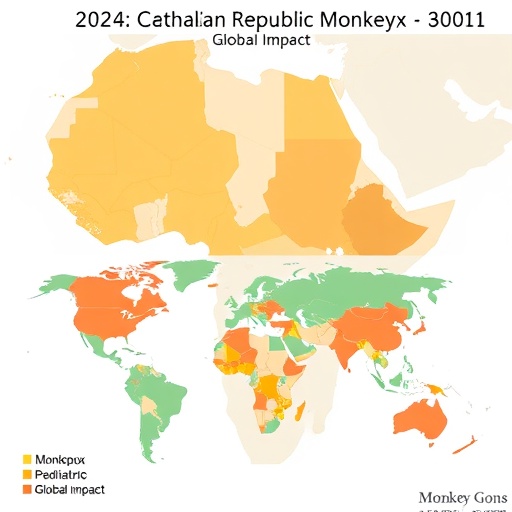PROTECT YOUR DNA WITH QUANTUM TECHNOLOGY
Orgo-Life the new way to the future Advertising by AdpathwayIn recent years, the multifaceted symptom of fatigue has emerged as a significant concern in both clinical and scientific communities. Often described as a debilitating experience that dramatically diminishes individuals’ quality of life, fatigue is not merely a transient sensation of tiredness. Instead, it represents a complex interplay of neurophysiological factors that can vary widely from one individual to another and across different medical conditions. As a result, the challenge of understanding fatigue has become increasingly pressing, given its profound implications for both public health and patient management.
The clinical presentation of fatigue is characterized by a striking degree of variability, fueled by a host of individual characteristics, as well as the specific disease context. This heterogeneity complicates the development of standardized diagnostic criteria, which in turn hinders effective communication between healthcare practitioners across a spectrum of disciplines. Current medical practices often lack an agreed-upon definition or framework for fatigue, which limits both research opportunities and the implementation of effective therapeutic strategies. Therefore, the medical community stands at a critical juncture, where a concerted effort to articulate a unified understanding of fatigue is essential.
One promising approach to addressing this intricate symptom has been proposed in a recent review that introduces a new taxonomy of fatigue. This framework delineates major clusters of fatigue origins: neurogenic, myogenic, and systemic. These clusters serve as a foundation for understanding the underlying mechanisms that contribute to fatigue in various contexts. Importantly, this taxonomy incorporates five distinct but interrelated concepts that capture the richness of fatigue as a clinical symptom. By acknowledging the diverse origins of fatigue, this classification system offers a pathway for clearer dialogue among researchers, clinicians, and patients alike.
Central to the taxonomy is the acknowledgment that fatigue arises from an array of biological mechanisms. For instance, neurogenic fatigue may be linked to abnormalities in the central nervous system, which can manifest in various neurological diseases. Conditions such as multiple sclerosis or Parkinson’s disease often feature unique patterns of neurogenic fatigue, reflecting the underlying pathophysiological processes in the brain. Understanding these distinctions can lead to enhanced diagnostic accuracy and more precisely tailored treatments for affected individuals.
Conversely, myogenic fatigue is primarily associated with muscle-related factors. Here, the focus shifts to the muscular system and its interaction with biochemical pathways that govern energy production and expenditure. Conditions such as muscular dystrophy and myasthenia gravis illustrate how systemic muscular dysfunction can lead to crippling fatigue, rendering patients unable to perform daily activities without significant effort. Identifying the signs and symptoms associated with myogenic fatigue can pave the way for targeted interventions that address the muscular deficiencies contributing to this debilitating experience.
Systemic fatigue encompasses a broader spectrum of conditions, often involving complex interactions between various bodily systems—immunological, metabolic, and endocrine. Chronic fatigue syndrome (CFS) is a prominent example of systemic fatigue, characterized by unrelenting fatigue that does not improve with rest and is often exacerbated by physical or mental exertion. This condition exemplifies the critical role of immune dysregulation and metabolic disturbances in eliciting persistent fatigue and challenges researchers to disentangle the numerous factors at play.
An essential aspect of these clusters is the recognition of the dynamic nature of fatigue. The interplay between genetic predispositions, environmental factors, and the progression of underlying diseases can influence how fatigue manifests over time. For instance, a patient with chronic illness may experience fluctuations in fatigue levels based on varying stressors, comorbidities, or therapeutic interventions. Thus, the temporal aspect of fatigue should not be overlooked when devising holistic approaches to treatment.
Comorbidities add another layer of complexity to the phenomenon of fatigue. Patients often present with overlapping medical conditions that can exacerbate feelings of tiredness. For example, individuals with both diabetes and depression may experience a compounding effect of fatigue that stems from both the metabolic disturbances of diabetes and the neurochemical imbalances associated with depression. Addressing such multifactorial sources of fatigue necessitates an integrative viewpoint, employing interdisciplinary methods to understand and manage these complex healthcare challenges.
In one of the most crucial acknowledgments made in the proposed review, the authors emphasize that advancing the understanding of fatigue requires concerted efforts in research. The current methodological challenges hinder progress in uncovering the intricate nuances surrounding fatigue, making extensive longitudinal studies imperative. Forming large research consortia will enable researchers to pool their resources, tackle design deficiencies, and navigate the multifaceted landscape of fatigue more effectively.
Equipped with multidimensional readouts from various clinical and biochemical measures, these studies stand to revolutionize how the medical community perceives and addresses fatigue. By examining fatigue through a comprehensive lens that accounts for biological, psychological, and sociocultural factors, researchers can lay the groundwork for targeted interventions that resonate with the diverse experiences of patients suffering from this symptom.
Moreover, therapeutic strategies are likely to evolve in accordance with a more finely tuned understanding of the intricacies of fatigue. With improved diagnostic models in place, clinicians can develop individualized treatment plans that take into account the multifactorial origins of fatigue. Whether through pharmacological options, lifestyle modifications, or psychological interventions, a tailored approach has the potential to yield significant advancements in patient outcomes.
As we move forward, the challenge remains for researchers, clinicians, and patients alike to embrace the complexity of fatigue with open minds and a willingness to explore uncharted territories. By fostering collaborations across disciplines and engaging in deep investigative pursuits, we may unlock the valuable insights required to demystify fatigue and offer hope for those whose lives have been overshadowed by its relentless grip.
In summary, the proposed taxonomy offers a promising framework for understanding the multitude of factors that contribute to fatigue. Its implementation could facilitate more nuanced research inquiries, leading to a sophisticated dialogue on the origins, manifestations, and management of this pervasive symptom. The vision for future directions—emphasizing integrative models and collaborative research—holds the potential to reshape our approach to fatigue, paving the way for improved clinical practices and enhanced quality of life for countless individuals.
As we navigate this compelling thread within the tapestry of medical research, it is clear that the journey to comprehend fatigue is just beginning. It invites a broad spectrum of contributions and encourages innovative solutions from all corners of the health and scientific community. This ambitious endeavor not only seeks to elucidate the phenomenon of fatigue but aims to illuminate the pathways toward recovery and resilience for patients grappling with its disabling effects.
Subject of Research: Fatigue in neurological and non-neurological diseases
Article Title: Fatigue: a common but poorly understood symptom in neurological and non-neurological diseases
Article References:
Penner, IK., Grothe, M. & Chan, A. Fatigue: a common but poorly understood symptom in neurological and non-neurological diseases.
Nat Rev Neurol (2025). https://doi.org/10.1038/s41582-025-01153-z
Image Credits: AI Generated
DOI: 10.1038/s41582-025-01153-z
Keywords: fatigue, neurological diseases, non-neurological diseases, taxonomy, chronic fatigue syndrome, myogenic, neurogenic, systemic fatigue.
Tags: challenges in diagnosing fatiguecommunication in healthcare about fatiguefatigue as a complex symptomfatigue in different medical conditionsfatigue research opportunities.implications of fatigue on quality of lifeneurophysiological factors of fatiguepublic health concerns related to fatiguestandardized diagnostic criteria for fatiguetherapeutic strategies for managing fatigueunderstanding fatigue in clinical settingsvariability in fatigue presentation


 3 hours ago
12
3 hours ago
12




















 English (US) ·
English (US) ·  French (CA) ·
French (CA) ·